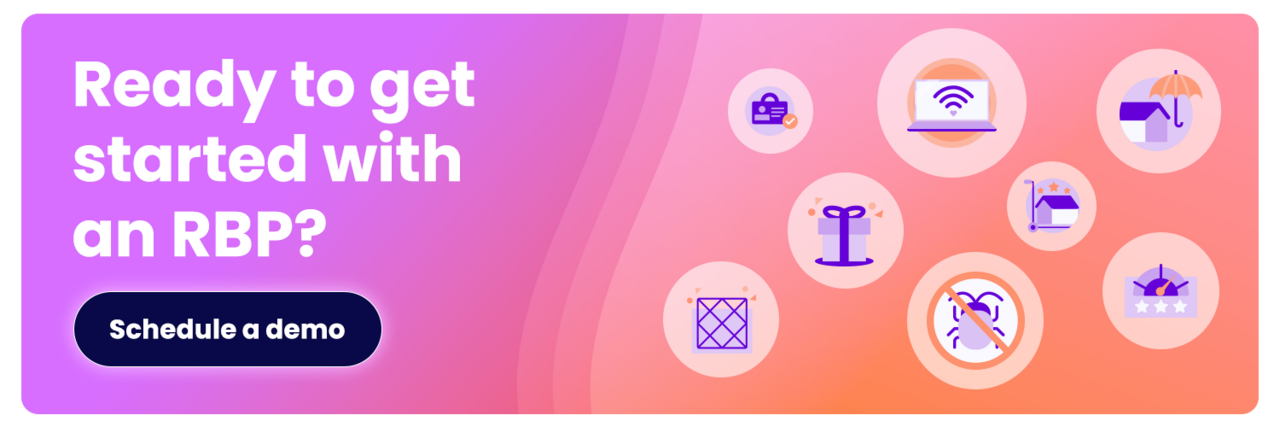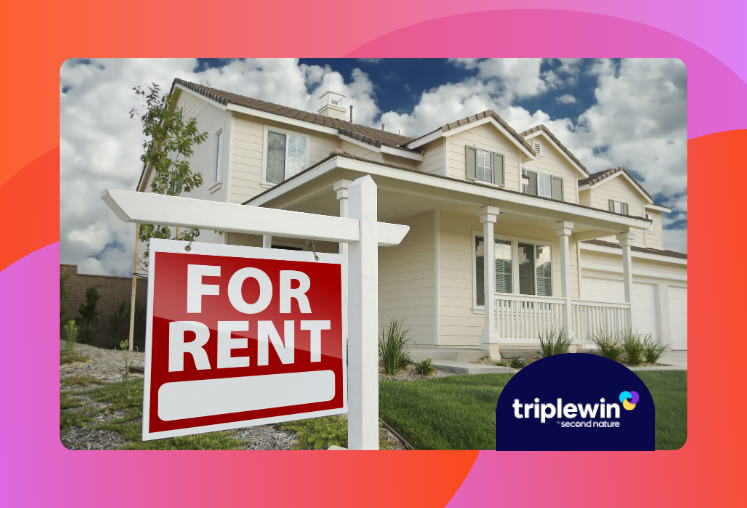What we'll cover
What is social media marketing for property management?
Why social media matters for property managers
Choosing the best social media platforms for property management
Content ideas for property management social media
Social media content strategy for property managers
Paid social media ads for property management
Tracking social media performance for property managers
Overcoming common social media challenges
Build long-term value with Second Nature
In the age of influencers, property management has been no exception. More and more property managers are building their personal and company brands across social channels, drawing more eyes and building trust with their customers. So how can you leverage social media marketing for property management, and drive real business results?
In this article, we’ll walk through how property managers can position themselves on social media, and provide a comprehensive guide for property managers who want to grow their business through better social content. We’ll look at how to choose which platforms to use, setting up a content strategy, driving engagement, purchasing social ads, and building your brand as an individual and a company.
What is social media marketing for property management?
Social media has become an essential marketing channel for property managers over the last decade. More and more, residents and owners are searching for and engaging with their PMs on social channels like Facebook, LinkedIn, and X.
Social media platforms allow property management companies to create branded pages where they can receive and send private messages, post public announcements to a wider audience, and solicit customer reviews. More and more residents are spending time on social media, regardless of age. In fact, nearly 64% of people globally use social media in 2025, compared to just 47% in 2020. That means that social channels are prime opportunities to increase visibility for your business, show your expertise in the industry, and convince both real estate investors and residents to work with you.
A strong social media presence can set you apart from competitors, and also help you be found more frequently in web searches. Combine that with the ability to quickly communicate with existing customers and residents, and the benefits quickly become clear.
Why social media matters for property managers
Social media is the perfect forum to boost your brand reputation and create a unique voice. In such a people-first business, property managers should be embracing their personal voice and opinions to build a sense of authenticity and trust. In fact, more and more, weaving your personal story into your company brand helps users develop relatability and attachment to your band.
Social media provides an invaluable opportunity to share personal anecdotes and thoughts, no matter how short or long, that show you’re an expert in your field. By engaging with others and having meaningful conversations online, you can also build your professional network and learn from those around you. Even providing simple tips or insights on other people’s posts can help build your expertise and get you noticed more often.
You can also engage with both residents and investors in comments, direct messages, and community groups. By being easy to find and reach, you present an image of accessibility, responsiveness, and reliability, and show that you prioritize customer service.
Choosing the best social media platforms for property management
Selecting where to invest your time on social media can seem a bit overwhelming. There are plenty of options, but we’ll break down the strengths of each and where you should prioritize your efforts.
Evaluate platform fit based on your audience
Start by deciding who you're trying to reach on social media. Different demographics tend to use different platforms, and Pew Research (2024) reveals clear usage patterns by age and demographic:
- YouTube (83% of U.S. adults): Universally popular, this video sharing giant is ideal for property walkthroughs, FAQs, and educational videos. It’s a great fit for any age group, and is actually one of the largest search engines in the world.
- Facebook (68% of U.S. adults): Facebook is most used by adults aged 30–64. It’s perfect for reaching Gen X and baby boomers, and community groups and local events make it a great platform for reaching local renters.
- Instagram (47% of U.S. adults): Highly used by adults under 30 (78%), Instagram is for far more than just posting what you ate for brunch. Use Instagram for showcasing visuals, lifestyle branding, and behind-the-scenes content, and leverage stories for short video promos for vacant units.
- TikTok (33% of U.S. adults): TikTok is one of the hottest social tools around, and usage has grown 12% since 2021. It is especially popular among adults 18–29 (62%). It’s perfect for lifestyle content, renter tips, and fun property highlights.
- LinkedIn (30%+ of U.S. adults): LinkedIn skews toward college-educated professionals, particularly those aged 30–49, and is best for B2B networking, attracting investors, and vendor outreach. Residents tend to be less active in engaging with their property managers on LinkedIn.
- Pinterest (30% of U.S. adults): Female audiences tend to dominate Pinterest. This app is all about sharing visual ideas and inspiration, making it perfect for decor boards, seasonal refresh tips, or neighborhood features.
Choose a platform that will help you meet your goals
In addition to your audience, you have to know your target goals, because not every platform fits every objective. Here's how to align your strategy:
- Brand awareness & retention: Facebook, Instagram, YouTube
- Networking & lead generation: LinkedIn
- Lifestyle marketing & education: TikTok, Instagram Reels, YouTube Shorts
- Visual storytelling & design inspiration: Pinterest
Consider your resources and bandwidth
When you’re choosing your channels, remember that it’s about quality over quantity. Rather than establishing profiles on every single platform and trying to juggle them all, start with just two or three platforms and focus on getting them right. Then, once you’ve gotten the hang of things, you can consider adding more.
If you’re posting often and across multiple platforms, consider using a scheduling tool like Buffer or Hootsuite to plan your content in advance. These kinds of tools can also allow you to post to multiple platforms with a single click, rather than having to create the same post over and over on different apps. If you use certain marketing automation tools, they may already have social media scheduling functionality built in.
Remember that many channels have similar formats, so you can often repurpose the same content. For example, you can post a short video as a TikTok, a YouTube Short, and an Instagram Reel, reaching more people without substantially more effort.
Content ideas for property management social media
Remember, property management is a highly social, highly visual business, so there are tons of opportunities for great content if you get creative. You don’t have to limit yourself to just promoting listings, either. You can share tips and tricks, behind the scenes looks at your team, and elements of your company culture that will encourage people to work with you. Here are some ideas to get you started:
- High-quality photos and videos of listings
- Neighborhood highlights and community amenities
- “Meet the team” spotlights
- Seasonal maintenance tips
- Reviews and tagged posts from residents
- Tips on rental processes, maintenance reminders (like air filters), and lease renewals
- Behind-the-scenes, day-in-the-life reels, and resident events
- What it’s like to live at one of your properties
- Viral trends that you can tie to your niche
The possibilities are endless, and don’t be afraid to take inspiration from other property managers who are killing it on social media.
Social media content strategy for property managers
With all these possibilities at your fingertips, it’s important to set an overarching strategy for your social efforts. You don’t want to be posting haphazardly or inconsistently, or sending mixed messages in your posts.
Set clear goals for your efforts
Make sure you know the purpose of your investment in social media. Start by defining what success looks like. You might be looking to increase brand awareness, generate more leads, retain residents longer, or something else entirely. Whatever your goal is, make sure that you identify KPIs that align to those goals, and measure your progress regularly.
Build a content calendar
Building a schedule of your content can help make sure you’re sharing consistently, but it can also save a lot of time. Work to batch your content creation and schedule weekly posts, which will minimize the time spent on social tools. Make sure you’re varying content types, too. For example, you might commit to posting one listing, one testimonial, and one local highlight per week.
Stay consistent and on-brand
You want to make sure that your visual branding is consistent across all your different social platforms, and that what users find there also matches what they’ll see on your website. Beyond that, you should establish a clear tone that you use across all your posts so that your audience is always experiencing a consistent version of you.
Paid social media ads for property management
Now that you have a strong understanding of organic posting on social media, it’s time to take a look at advertising, also known as sponsored content or paid social. Social media is a great opportunity to reach new audiences with ads, as long as you follow a few key guidelines.
Why paid social matters in 2025
Millions of renters are scrolling their social feeds daily. That creates a massive opportunity to get your listings in front of them. Social platforms also offer a uniquely effective way to target users by location, income bracket, and life stage, allowing you to better find potential applicants who are a strong fit for your properties.
Especially in competitive markets, social ads can keep your brand and your properties top of mind through each and every decision stage.
Create scroll‑stopping ads
Creating effective ads might seem challenging, but it’s all about the visuals. Use high‑quality photos, 15‑second videos—framed vertically, to match users’ devices—or 360° tours. If you’re posting videos, make sure they have text overlays for users who are scrolling without sound on. Captions and copy should be brief and benefit-focused.
Optimize targeting and budgets
Social platforms also allow you to create look-alike audiences using your past resident, applicant, or owner lists. That means you can target your ads specifically to the people who best fit your customer profile. You can also retarget your website visitors, especially those who may have started filling out an inquiry form but then abandoned it.
When you’re just getting started, try a balance of about 70% prospecting ads and 30% retargeting ads, and then evaluate every thirty days to rebalance your ad mix.
Measure and refine performance
Make sure that you’re tracking key metrics like click-through rates of your ads, cost per lead from social media, and numbers of tours and leases that come from your social channels. You can also create A/B tests for different ad creative and update it weekly. Some platforms even let you automatically pause low-performing ads and boost those that win A/B tests.
Don’t forget to use UTM tags and tracked links so that you can specifically tie new business to your social media efforts.
Tracking social media performance for property managers
As you build your social media strategy, make sure you’re consistently measuring performance. Consider key metrics like reach, engagement rate, follower growth, and click-through rates, all of which are good measures of how much your content is resonating with your audience.
Most social tools typically have basic metrics built in, but platforms like Sprout Social, Agency Analytics, and Hootsuite offer a wider range of measurement tools, including dashboards and downloadable reports. If you’re doing extensive social posting and need to consistently monitor performance, it may be worthwhile to invest in one of these tools.
As you push to improve your performance, make sure you’re testing images against video, different headlines and captions, and posting times throughout the day or week to see what works best for your audience. Then, apply those learnings moving forward for each campaign.
Overcoming common social media challenges
Many companies struggle to gain traction on social media, or expect instant success and are disappointed when they don’t see it. Here are some of the most common challenges with social media marketing, and how you can avoid them with your property management business:
- Inconsistent posting schedule: Posting inconsistently can lead to a disengaged audience, but it also hurts you in social media algorithms, which favor creators who post consistently. This is where your content calendar and scheduling tools can come in.
- Declining organic reach: Some companies see their post impressions decline over time, often because they’re only posting but not interacting. Make sure you’re interacting with your audience’s posts, either with likes and reactions or with comments, which will help algorithms rank your content more highly. Make sure you’re also posting content that encourages your audience to interact, rather than just looking or reading and scrolling on.
- Content saturation and competition: Some posters also find themselves running out of content ideas quickly. Remember that it’s about quality over quantity, and that you don’t always have to be posting as often as your competition. Focus on the consistency of your content, both in when you post and the quality of what you’re sharing.
- Negative feedback and reviews: Plenty of companies get dismayed by negative reviews or feedback on their pages. Make sure that you’re handling negative feedback calmly, quickly, and professionally, and that you’re actually making process changes to prevent similar reviews in the future.
- Lack of clarity: If you’re a property manager who isn’t as data-driven, this can be a challenge. Make sure you’re leveraging analytics to measure success and jumping on hot trends that you see across other pages. Like any other marketing channel, KPIs should be guiding your strategy.
Build long-term value with Second Nature
Remember, social media is a great way to show your personality, expertise, and what you’re doing to deliver the best possible experience for your residents. From lead generation to community engagement, social media is all about building trust in your brand, both as an individual and as a property management company.
Things like reminders to change air filters, instructions on how to leverage benefits, and success stories of residents who have seen boosts to their credit scores are all content gold, made possible by programs like Second Nature’s Resident Benefits Package.
If you want to learn more about how Second Nature delivers top-tier resident experiences, schedule a demo with an RBP expert in your area today.





